
サード宝石:情報、意味、サードニクスとカーネリアンとの関係
 サードは、半透明で赤褐色から褐色のカルセドニー宝石で、古代から愛されています。サードは、カルセドニーの仲間であるカーネリアンやオニキスと近縁関係があり、いずれも彫刻の素材として人気があります。
サードは、半透明で赤褐色から褐色のカルセドニー宝石で、古代から愛されています。サードは、カルセドニーの仲間であるカーネリアンやオニキスと近縁関係があり、いずれも彫刻の素材として人気があります。
「サード」という名前の石があなたの好みに合わないと思っても、まだ諦めないでください。少し引いてしまうような名前ですが、サードは美しい宝石です。秋らしい色合いと落ち着きのある性質は、土の香りを求める人にぴったりです。
このガイドを読み終える頃には、サード宝石の用途、治癒特性、価格、意味などについて知るべきことはすべてわかるようになります。
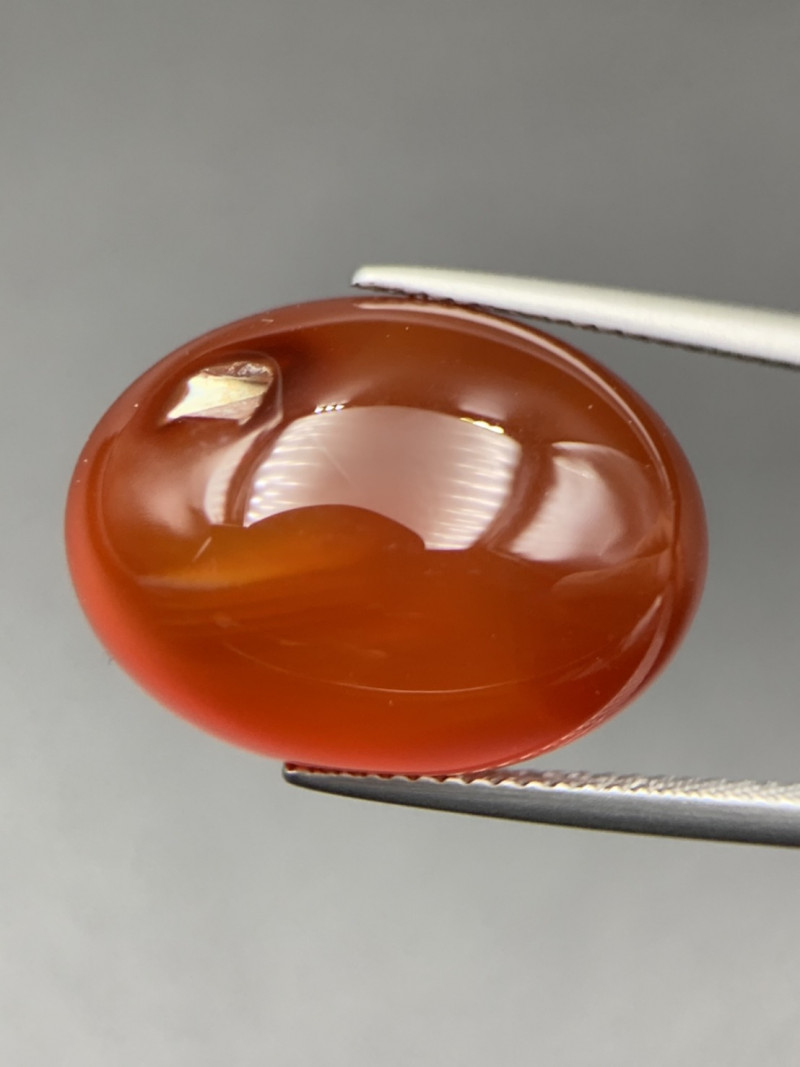
サードストーンとは何ですか?
サードは深く均一な色の石で、オニキスと混ぜてサードニクスを作ることで広く知られています。
歴史的には、サードとサードニクスはどちらも最も人気のある半貴石であり、印章に実用的に使用され、宗教的な道具を含むさまざまなアクセサリーの装飾にも使用されていました。
古代ローマ人やギリシャ人はサード石を「火の石」と呼んでいました。火星の星石、また激しい蠍座の星座石としての位置づけにぴったりです。
もしかしたら、あなたは燃えるような夏の季節に生まれたのかもしれません。サードニクスはあなたの誕生石で、夫婦円満を象徴すると言われています。実は、サードニクスは1700年代のポーランドで初めて8月の誕生石として制定されました。
夫婦の幸福といえば、似た宝石であるカーネリアンは結婚17周年を記念するもので、サードも素晴らしい代替品です。
次に、サード鉱物の特性は何でしょうか?
サードの仕様と特徴
サード鉱物は、微結晶石英の一種であるカルセドニーの一種です。カルセドニーはシリカで構成されています。マクロ結晶石英(アメジストなど)に似ていますが、結晶が目に見えないほど細かく密集した塊を形成しています。
瑪瑙や碧玉のグループのような多くのカルセドニーのサブタイプとは異なり、サードカルセドニーの石には色の縞模様がありません。
サード鉱物の特性は次のとおりです。
モース硬度:6.5~7
色:赤褐色、茶色
結晶構造:三方晶
光沢:ガラス質、油状、蝋状、または樹脂状
透明度:半透明から不透明
屈折率:1.53~1.54
密度:2.56~2.68
胸の谷間:なし
骨折:貝殻状または粒状
縞模様:白
発光:なし
サードの鉱物的側面はご存知でしょうが、カーネリアンやサードニクスと比べるとどうでしょうか?
サード vs. カーネリアン vs. サードニクス
カルセドニーの混同で最も多いのは、サード、サードニクス、カーネリアンの混同です。これらはすべてカルセドニーであるだけでなく、赤、オレンジ、黄色、茶色といった温かみのある色合いも共通しています。
サードとサードニクスは、名前だけ聞くと混乱する人が多いかもしれません。まずは、それぞれの違いを詳しく見ていきましょう。
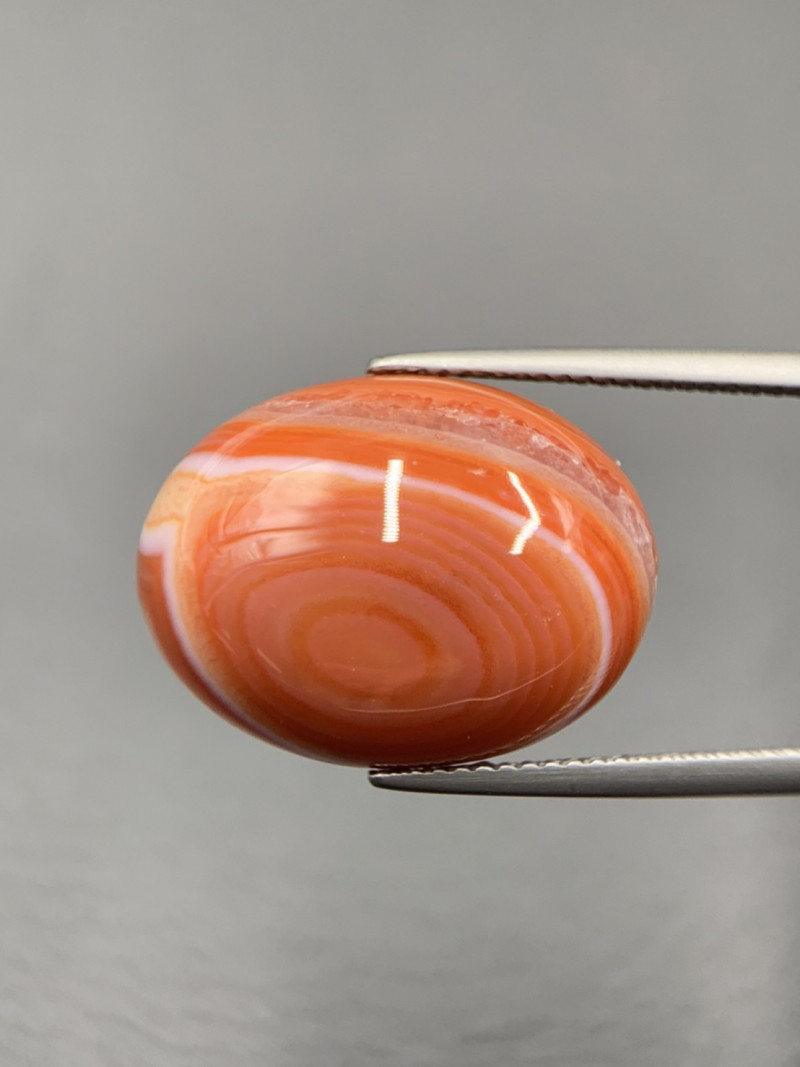 写真:サードニクス
写真:サードニクス
サード vs. サードニクス
サードニクスは、サードが層になったオニキス石(別のカルセドニーの一種)の一種で、通常は赤、オレンジ、白の色合いの縞模様を作り出します。
サードとサードニクスの最も簡単な見分け方は、サードには色の縞模様がないことです。さらに、サードニクスは明るい色合いと鮮やかな色合いが混ざり合っているのに対し、サードは暗い色合いが多いのが特徴です。
サードとサードニクスはサードとカーネリアンよりも近縁であると思われるかもしれませんが、驚くべきことにそうではありません。
では、サードとカーネリアンの違いは何でしょうか?
 写真:カーネリアン
写真:カーネリアン
サード対カーネリアン
カーネリアンは、通常は単色ですが、時にはカラーゾーンが見られる、赤、オレンジ、または茶色のカルセドニーです。
カーネリアンとサード石は色によってのみ区別されますが、その色さえも常に一貫しているわけではなく、カーネリアン石の中にはサード石の色が現れるものもあります。
正式な区別がないため、「サード」と「カーネリアン」は技術的には同義語です。しかしながら、一般的にはサードの方がカーネリアンよりも濃い茶色をしていると考えられています。
これでカーネリアンとサードニクスの鉱物学的意味は説明できましたが、サード宝石の形而上学的意味についてはどうでしょうか?

サードの意味と歴史
サードには古代から様々な意味が込められてきました。当時、サードは勇気、守護、そして喜びの象徴とされていました。同様に、サードニクスのジュエリーは古代エジプト人、インド人、ローマ人にとってお守りとして身に着けられていました。
サードの意味と力に関する歴史的な解釈には次のものがあります。
戦争中の保護 — ローマ兵
悪霊を追い払い、犯罪を減らす — エジプト人
魔術からの保護 ― メソポタミアとインド
貧困を防ぎ、成功と喜びをもたらす — 預言者ムハンマド
愛の女神ヴィーナスの力にアクセスする ― ローマの女性たち
雄弁さの増大 ― ルネサンス時代のヨーロッパ人
「サード」という用語は、実は「クリスタル」を除くクォーツを表すあらゆる用語よりも古くから使われてきました。旧約聖書では、サードはアロン(または大祭司)の胸当てに挙げられている12個の石のうちの最初に挙げられています。また、精神的な強さの象徴としても知られています。
古代史
古代ローマの学者、大プリニウスは、西暦77年に著作『博物誌』の中で、サード(または「サルディウス」)に関する最初の公式記録を残しました。プリニウスは、この石の名称は、サルディス(現在のトルコ、サルト)で初めて発見されたとされる石にちなんで名付けられたと主張しました。
しかし、多くの学者は、サードという語は「黄赤色」を意味するペルシャ語の「sered 」に由来すると考えています。これは、サードの使用がローマ時代以前から始まっていたためです。ローマ帝国は紀元前625年に建国されましたが、サードの採掘は青銅器時代(紀元前3300年~紀元前1200年)に始まりました。サードとサードニクスの用途は、4000年前の古代エジプトにまで遡ります。
古代アテネの弁論家デモストラトスによると、サードを初めて身に着けたローマ人は、紀元前2世紀の高名な将軍アフリカヌスでした。デモストラトスは、アフリカヌスがローマにおけるサードの隆盛のきっかけを作ったとしています。紀元1世紀のローマ皇帝クラウディウス・カエサルでさえ、サードとエメラルドの装飾品を好んでいました。

サードリング
サードの最も古く、そして最も広く使われた用途の一つは、彫刻が施された指輪でした。しかし、サードリングとは何でしょうか?そして、なぜ重要なのでしょうか?
サードリングは、一般的に印章リングで、蝋の印章に押し付けるカメオとして内側に彫刻が施されており、人気のサード製品のもう 1 つであるスカラベに似ています。
有名な例としては、イスラム教の創始者、預言者ムハンマドが7世紀に身に着けていたサードまたはカーネリアンの印章指輪が挙げられます。彼は、イスラム教の中心的な巡礼地であるメッカの大モスクから偶像が撤去されたことを祝って、西暦630年にこの指輪を身に着け始めたと伝えられています。
彼はまた、ローマ人(封書しか読まなかった)への手紙の封印にもこの指輪を使い、「アッラーの使徒ムハンマド」というフレーズをアラビア語で刻ませました。このタイプの指輪はアキーク・リングと呼ばれ、イスラム教徒の男女が身に着ける重要なイスラムのシンボルとなりました。多くの人が、祈りや邪視の刻印をサード・リングに刻んでいます。
近代史
サードとカーネリアンは中世(西暦500~1500年)まで「サーディオン」と呼ばれていました。1600年代には、インドのタージ・マハルのパルチン・カリ(またはピエトラ・ドゥーラ)と呼ばれるモザイク状の象嵌細工にサードが用いられました。
サードカボションは、1912年にイギリスで発見された「チープサイド財宝」に含まれていた16世紀の宝飾品数百点の中にも含まれていました。ビクトリア朝時代のイギリスでは、サードは宝飾品や印章の彫刻によく使われていました。
一方、1800年代のロシアでは、著名な宝飾デザイナー、グスタフ・ファベルジェがロシア皇室のためにサードニクス製のコサック像を彫刻しました。1900年代初頭には、ロシア産のサードニクス彫刻は彫刻やペーパーウェイトへと発展し、世界中に輸出されました。
今日、サードはそれほど有名ではありません。治癒効果という点では、現在サードはどのような用途に使われているのでしょうか?

サードの治癒特性
カルセドニーのあらゆる種類、そして宝石は、ヒーリングストーンとして使用できます。カーネリアンは最近ヒーリング効果で人気が高まっていますが、サードも依然として強力なヒーリングクリスタルです。主に茶色の宝石であるサードは、グラウンディング、モチベーション、そして安定をもたらす力を持っています。
身体的および感情的な癒しのために、サードニクスクリスタルはどのように使用されますか?
身体の治癒
歴史的に、人々は毒や有毒な昆虫、動物の咬傷から身を守るためにサードを使用していました。また、悪夢やその他の睡眠障害の緩和にも効果がありました。
女性にとって、サードは出産を楽にし、妊娠の痛みを軽減する効果があると長い間推奨されてきました。
感情的な癒し
感情面では、サードストーンは自己不信、ネガティブ思考、衝動性に悩む人に効果があります。これらの感情を自信、自制心、そして幸福感へと変えると言われています。
サードは、恋愛関係にもプラトニックな関係にも役立つと考えられています。誠実なコミュニケーションを促進し、弱さを助長し、無私無欲を高め、成長のための安定した基盤を提供すると信じられています。
安定した基盤といえば…
チャクラヒーリング
サードは、安定、繋がり、そして個人の成長の基盤となるルートチャクラのチャクラストーンです。チャクラクリスタルは、ブロックされたチャクラ(エネルギーポイント)の悪影響を解消し、バランスを取り戻すために使用されます。
背骨の付け根にあるルートチャクラは、骨盤の不快感や他者との感情的な繋がりのなさを感じている場合は、ブロックされている可能性があります。サードを使ってバランスを整えることで、自信がつき、地に足がつき、安心感を得ることができます。
もちろん、サードジェムを購入する際には、お得な買い物をしたいですよね。では、価値を見極めるポイントを見ていきましょう!
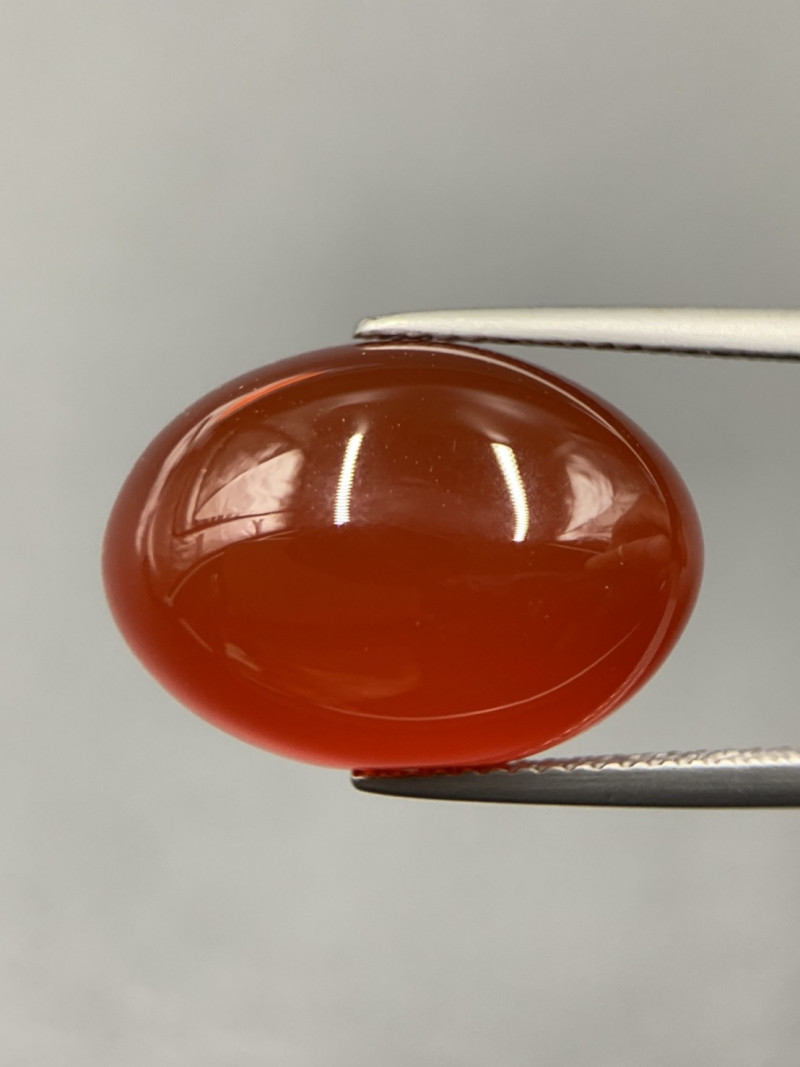
サード宝石の特性
サードは豊富な宝石であるため、他の石のように希少性は価値に影響を与えません。価値に影響を与えるのは、色、カット、透明度、そして処理です。
色
サードは一般的に赤から茶色で、オレンジや黄色の基調を持つことが多く、白や黒の内包物(曇ったように見える)が見られることもあります。この石の色は、酸化鉄(多くの場合、リモナイト)の不純物によるものです。明るい色合いのものが最も価値が高く、特に直射日光の下では鮮やかな赤色に見える半透明のサードは価値があります。
カット
彫刻が伝統的に選ばれていますが、今日ではサードビーズが最も一般的です。指輪やペンダントによく使われるサードカボションも一般的です。 ファセットカットされたものもありますが、こちらは比較的稀です。
透明性
石は半透明から不透明ですが、半透明のサード石は一般的に最も高い値段が付きます。
治療
カルセドニーは歴史上初めて人工的に処理された宝石の一つです。紀元前 1300 年、加熱されたカーネリアンがツタンカーメン王の墓で発見されました。
着色処理の一つとして(現在ではあまり一般的ではありませんが)、玉髄を蜂蜜または砂糖溶液に浸して加熱する方法がありました。今日では、濃い色のサードを加熱して明るい色に仕上げることもあります。これは、熱によって鉄の不純物が酸化されるためです。
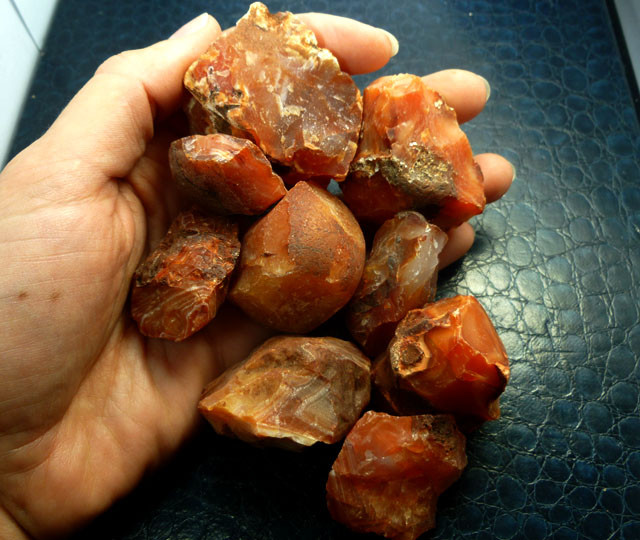
サードの形成と起源
他のカルセドニーと同様に、サードは比較的低温で、シリカを含んだ地下水が岩の割れ目に浸透することで形成されます。また、水は物質を溶解させる性質があり、シリカが代わりにサードへと固まります。
通常、サードは地表近くで溶岩の内部に形成されます。マグマとして地表に噴出した岩石自体が冷えるためです。水は岩石内の隙間にシリカを沈殿させ、その後蒸発することでシリカが固まりサードとなります。完全に固まる前に、酸化鉄が入り込み、土のような色合いになります。
採掘場所
インドは最高品質のサード石とサードニクス石の産地として有名です。
Sard の語源は以下のとおりです:
ブラジル
ドイツ
イタリア
モンゴル
ペルー
ポーランド
ロシア
スリランカ
ウルグアイ
アメリカ合衆国(カリフォルニア州、コネチカット州、ニュージャージー州、ニューメキシコ州)
最後に、サードの価値はいくらでしょうか?朗報です。とてもお手頃価格です!

サードの価格と価値
卸売価格では、1カラットから18カラット近くまでのサードカボションは1個あたり約14ドルです。ファセットカットされたサードカボションは5ドルから始まり、通常は15ドルを超えることはありませんが、淡い色の石は40ドル前後になることもあります。
ジュエリーの場合、サードペンダントは通常30~40ドル程度です。より高価なものには、ダイヤモンドなどのより高価な宝石が使われています。
シグネットリングは、ほとんどがアンティークで手彫り、高品質のゴールドセッティングが施されているため、より高価です。スターリングシルバーのリングは50ドルから100ドル程度と低価格ですが、ゴールドセッティングのリングは270ドルから8,000ドル以上と幅が広くなっています。
サードのケアとメンテナンス
サードストーンは割れにくいので、お手入れは簡単です。ただし、超音波洗浄機を使用すると欠けてしまうことがあるため、超音波洗浄機の使用は避けてください。代わりに、柔らかいマイクロファイバーの布とぬるま湯(中性洗剤を薄めたもの)を使用してください。別の柔らかい布で拭いて乾かし、傷がつかないように他の宝石とは分けて保管してください。
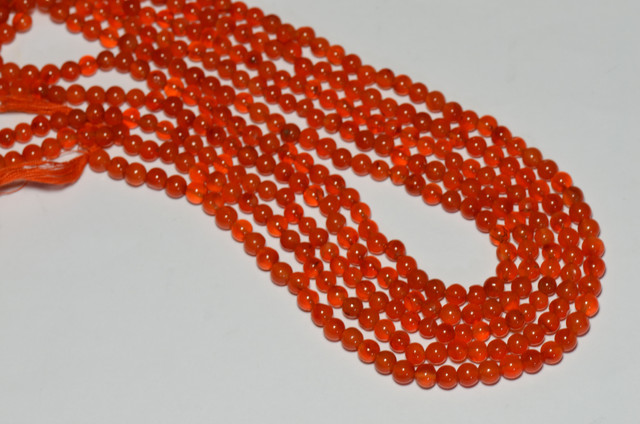
古代の、アクセスしやすい宝物をお探しですか?
宝石を名前だけで判断してはいけません。サードは期待を裏切る宝石です!王族から一般の人々にまで愛されてきた長い歴史を持つ宝石は稀少ですが、サードはまさに最高級品と言えるでしょう。
ドイツの詩人ヨハン・ヴォルフガング・フォン・ゲーテはサードについて次のように述べています。「このような宝石から、女性は苦しみの中で甘い希望と慰めを得るのです。」
守護、幸福、成功をもたらす伝説の宝石をお探しなら、実績のあるサードクリスタルをお試しください。
Gemstone Encyclopedia検索
最新記事
ヤシ象牙彫刻は、植物象牙とも呼ばれ、南米のヤシ科植物フィテレファス属のヤシの実から倫理的に採取された、象牙の天然代替品です。このガイドでヤシ象牙についてすべて学びましょう!
15th Jan 2026
レインボーラティスサンストーンは、様々な内包物によって3つのゴージャスな光学的効果を持つ長石の一種です。燃えるように鮮やかな色合いと格子模様が、コレクターにとって希少な宝石となっています。
12th Jan 2026
記事のカテゴリ
How To's is where you will find helpful articles from gem Rock Auctions on how to cut gemstones, select gemstones and buy gemstones.
9記事数
